'It's real steel, it's rim brake, and I love it': Tech writer Joe Baker has ditched super bikes for a 1990s race bike
A bike with serious character, and a build cost of under £500
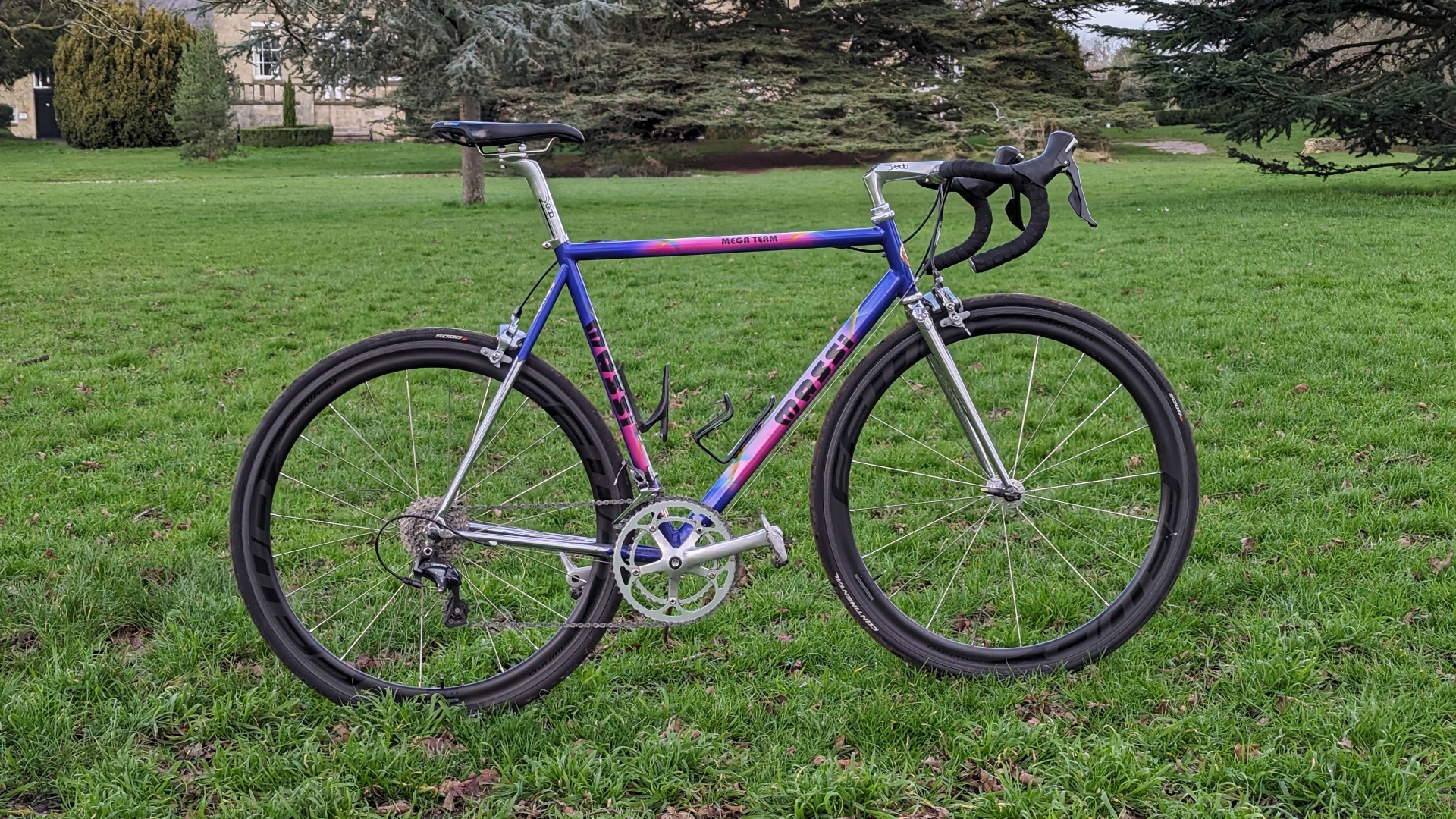

Given I'm a cyclist, my job puts me in an incredibly privileged position. Quite frankly, the opportunity to ride and test the latest and greatest technology from brands across the world really is special.
But when the clock chimes 5 pm on Friday, I do remain a bike nut - though what I ride in my own time might come as a bit of a surprise. I'm pretty sure I am the only staff member at Cycling Weekly whose main road bike is actually older than them.
Introducing my custom-built 1992 Massi Mega Team road bike. It’s real steel, it's rim brake, and I love it. But why have I ditched aero superbikes, I hear you ask? Allow me to explain.
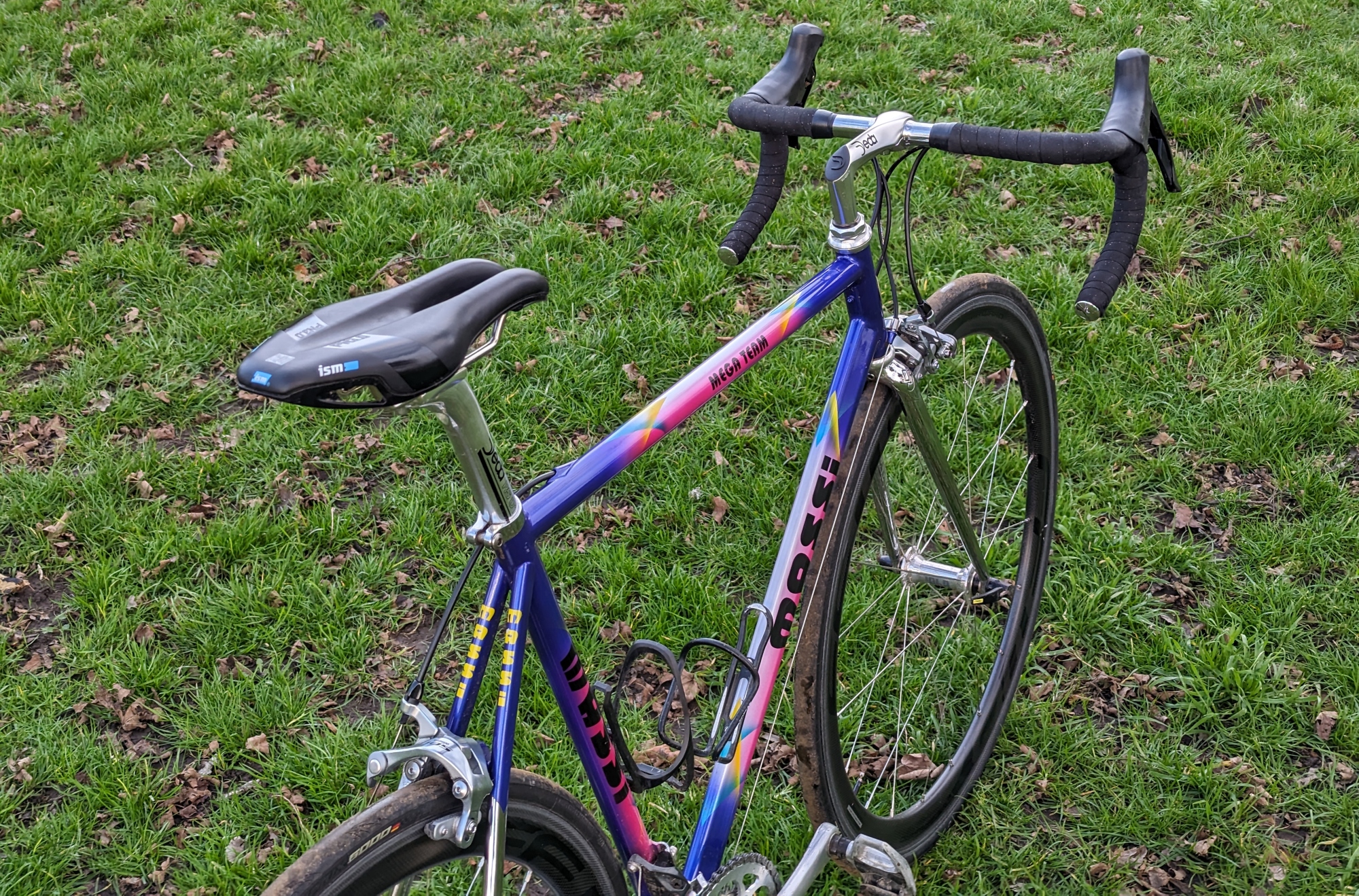
The move away from the utopian world of hidden cables and magic disc brakes was catalysed by a rather unfortunate event - bike theft. My previous long-term race bike, a Factor O2, was stolen from my garage around two years ago (along with my mountain bike... not a good day), and it left me not only without a road bike, but with a pretty big hole in my wallet.
When I looked to replace the bike, my riding had totally changed. No longer was I racing full-time on the continent, so no longer was I searching for every last watt in a competitive environment.
With that in mind I began the search for a bike I could truly fall in love with. I decided I wanted something different, and after trawling the likes of eBay and online forums, and eventually stumbled across this gorgeous frameset for the modest price of just £208.
With no clue whether the 53cm frameset would fit me, or what parts I was going to put on it, I bought it - and when it turned up at my door, the condition was even better than I could have hoped - even if it did remain a desk ornament for a couple of months while I hunted for parts...
The latest race content, interviews, features, reviews and expert buying guides, direct to your inbox!
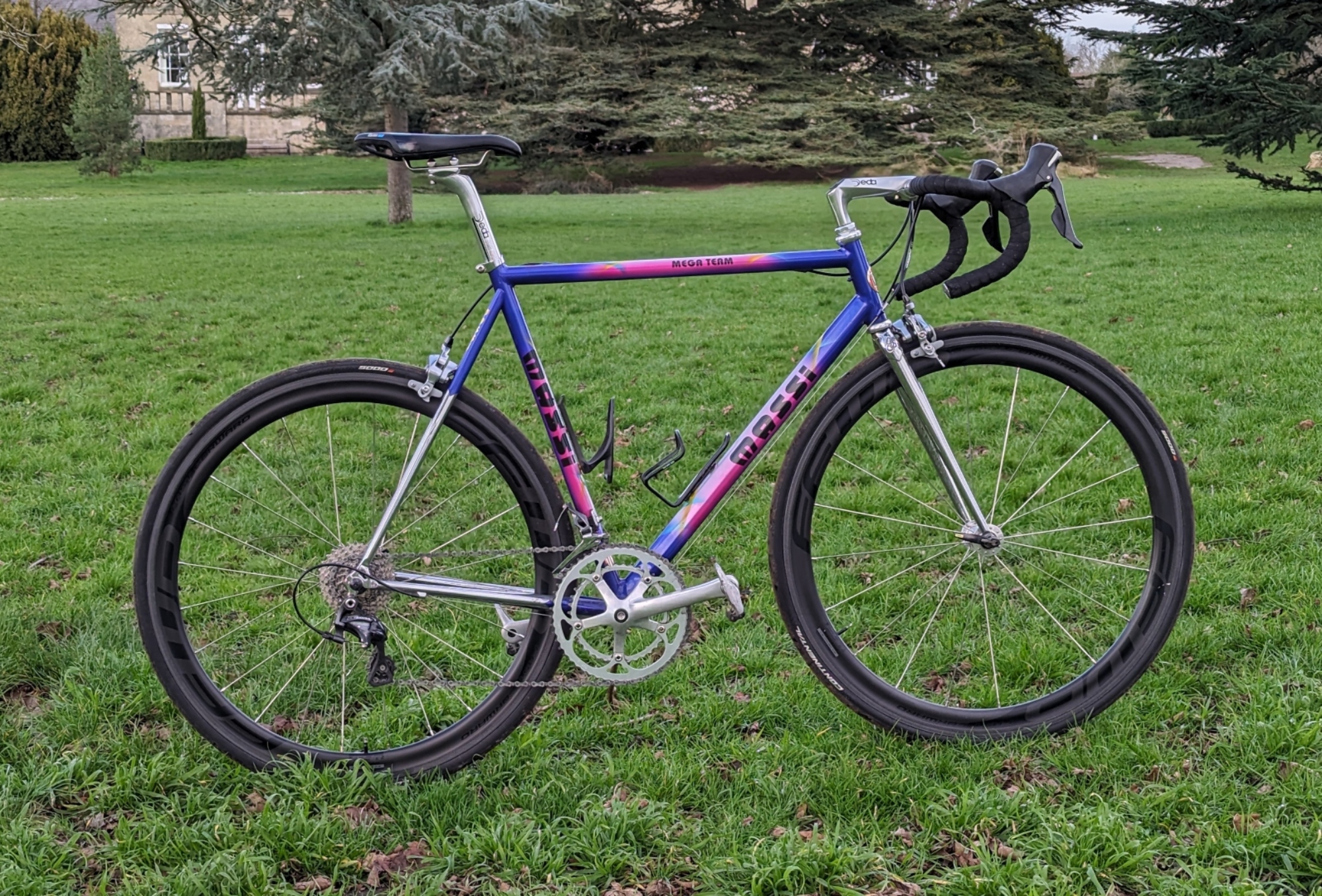
The Massi Mega Team Race frameset dates back to 1992, and features high quality Colombus Brain butted steel tubing. It slightly postdates the typically steel associated lugged construction, instead utilizing standard welds. Other interesting features include triangulated rear chain stays, which are designed to aid stiffness, and a threaded headset and bottom bracket - hooray!
Eagle-eyed readers and vintage enthusiasts will have noticed that this is a Massi - spelt with two S’s. Renowned Italian frame builder Faliero Masi (with one S) produced high-quality hand-made framesets. My bike on the other hand, was mass-produced in Spain, and the Massi brand still exists today.
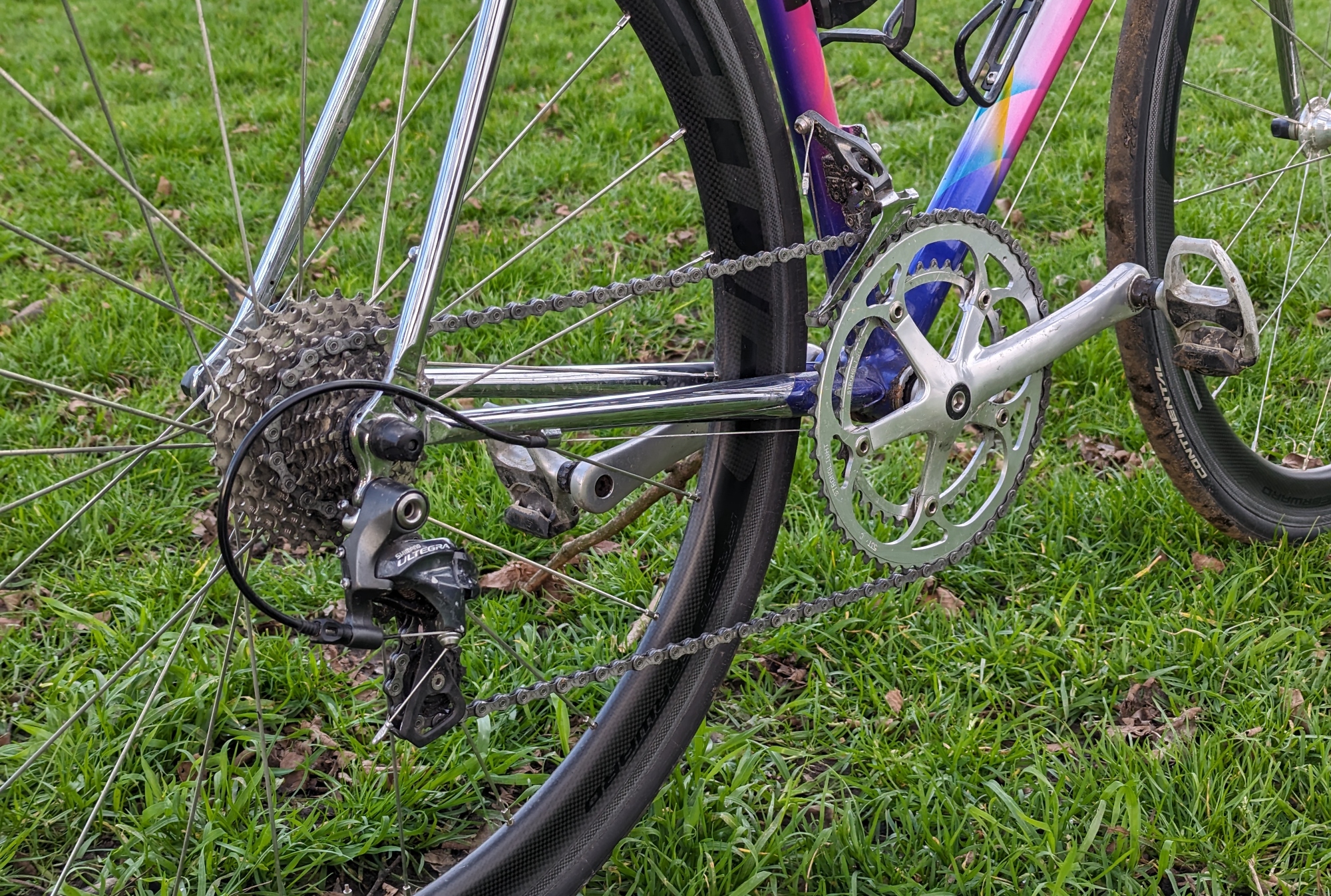
My fortune did turn change for the better after the theft though. I managed to acquire a full Ultegra 6800 groupset from the rather unlikely setting of the local tip. By chance, I met a man who was throwing away an old crash-damaged Wilier frameset, with a full groupset and finishing kit still attached. I had to ask whether I could take it off his hands, and having already received an insurance payout and a new bike upgrade, the chap was more than happy to see the old parts go to use.
No, it's not Shimano's latest and greatest Di2 shifting, but it is absolutely functional, even 10 years after it first came out, and as a result, servicing is refreshingly simple. No diagnostic screens, just stainless steel cables, a couple of times a year.
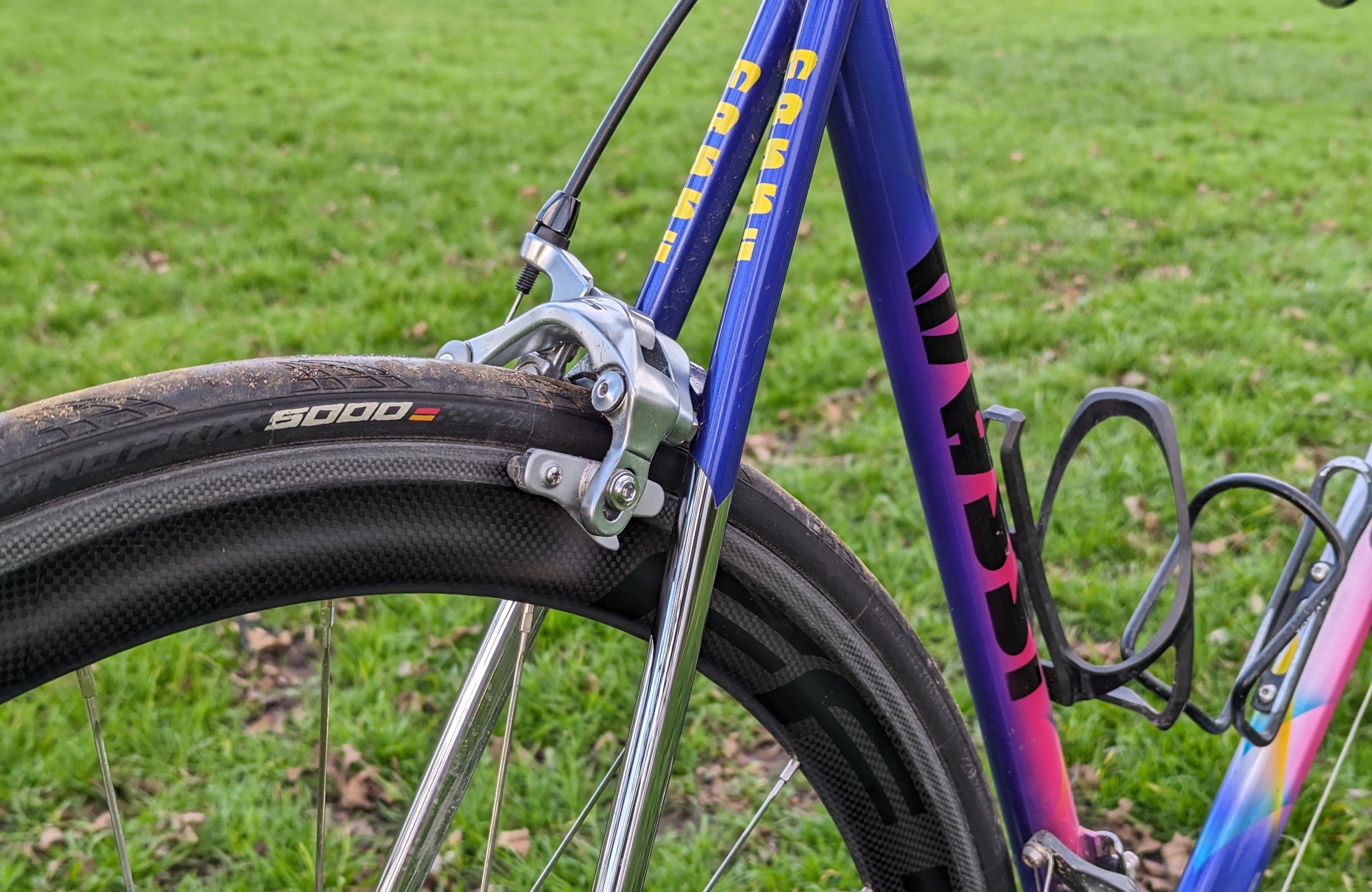
Wheels too were a stroke of luck. For the price of ‘a chaingang leadout and a couple pints’ I acquired these 45mm Fast Forward carbon wheels from a friend, who, having switched to disc brakes, had no use for the wheels which he thinks are from 2013! The tyres they are shod with are much more modern - Continental GP5000, in a now fairly retro 25mm width. There's not a tubeless valve or sealant in sight anywhere either - just a 3 minute puncture change as and when the inevitable occurs.
Yes, the somewhat archaic rim profile and frame clearance do make for a slightly more careful ride when it comes to potholes, but thankfully the brilliantly compliant attributes of the steel frame keep the ride quality silky smooth.
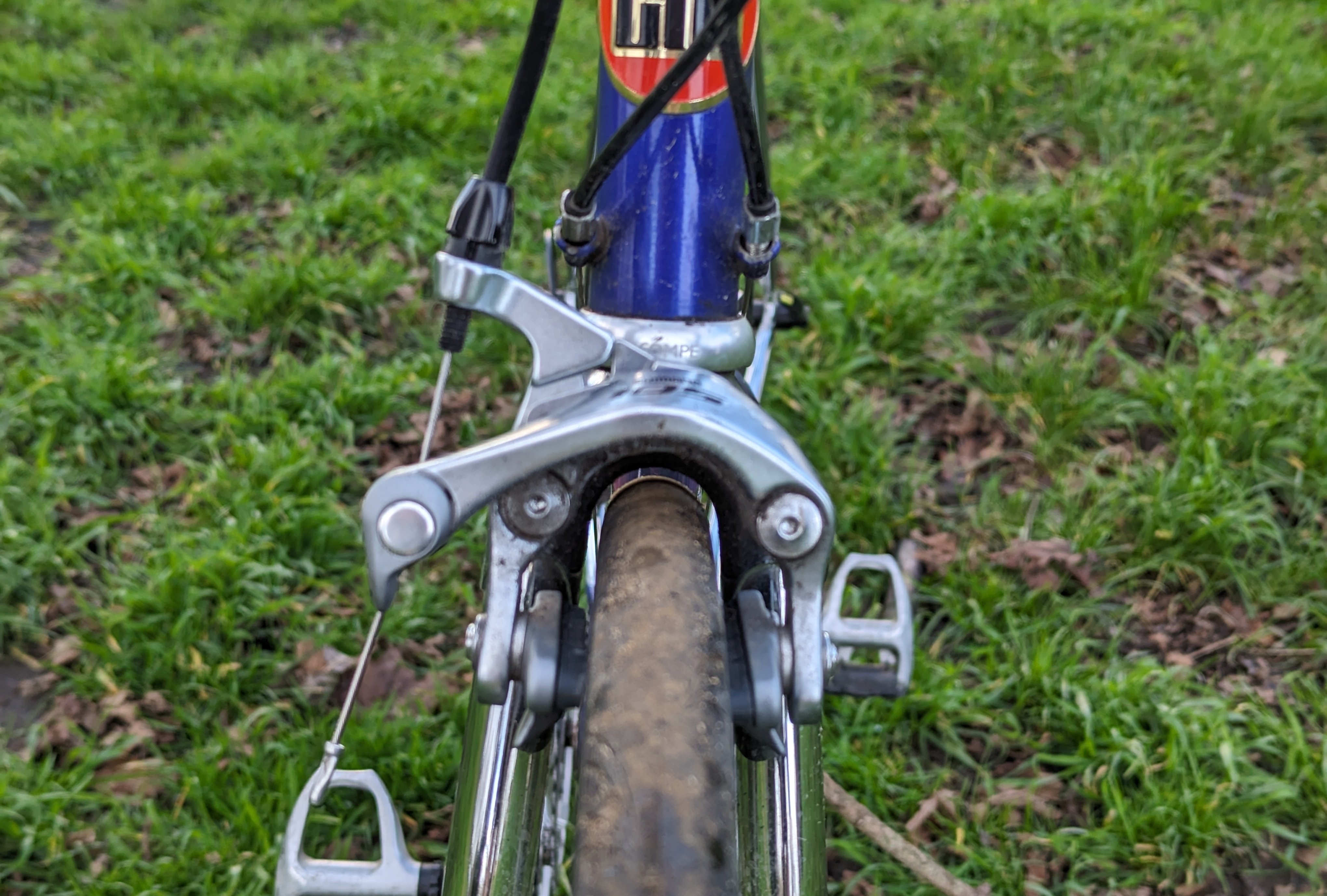
25mm tyres fit... just - bar some occasional scraping noises on muddy winter rides
I did spend out a little more on some of the finishing kit. This Deda Murex quill stem, for example, set me back £42, and a similar cost for the matching seat post too. These touches though, I think, really make the build.
Now, I can't avoid talking about it anymore - the saddle. Yes, it normally belongs on a time trial bike, but I have been using the ISM PN 3.0 (£90 second-hand) for around 4 years now, and I just get on with it. For the sake of this bike's appearance, I do say that somewhat regrettably, but this is my long-term steed, so function comes first.
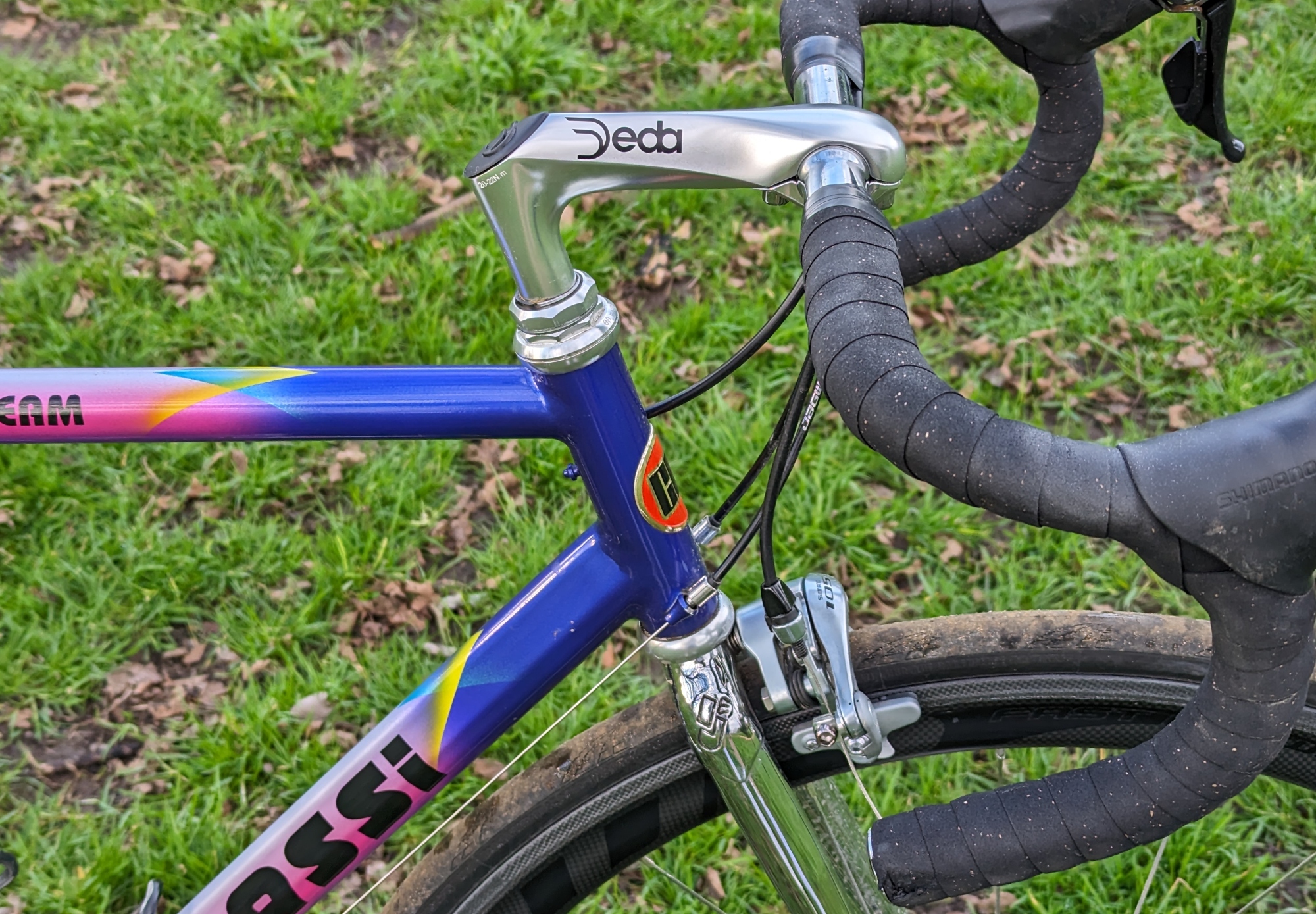
In total the bike cost me just south of £500, which I think, is an absolute 'steal'...
Perhaps what is more impressive is the weight, just 9.42kg, including pedals and bottle cages in the current spec. That's lighter than some alloy bikes more than twice the cost.
But how does the bike ride - are aero bikes a myth? No, it turns out!
This bike is not fast by any means, external cable routing, old school tube shapes are likely to blame for that - but riding is about more than just average speed chasing for me these days. That said, it’s an important point - I have ridden both superbikes and my Massi around a given loop, and the speed differential seems to be around 3kph when riding at a steady pace in the region of 30kph - though this is not power meter verified.
What the Massi lacks in outright speed though, is more than accounted for by the bike’s comfort and handling. Steel has long been hailed for its vibration-dampening qualities, and it’s no different here. It corners brilliantly too. The handling is a little slower than bikes on the market today, but the low feel from the traditional drop handlebars is something I have really warmed to.
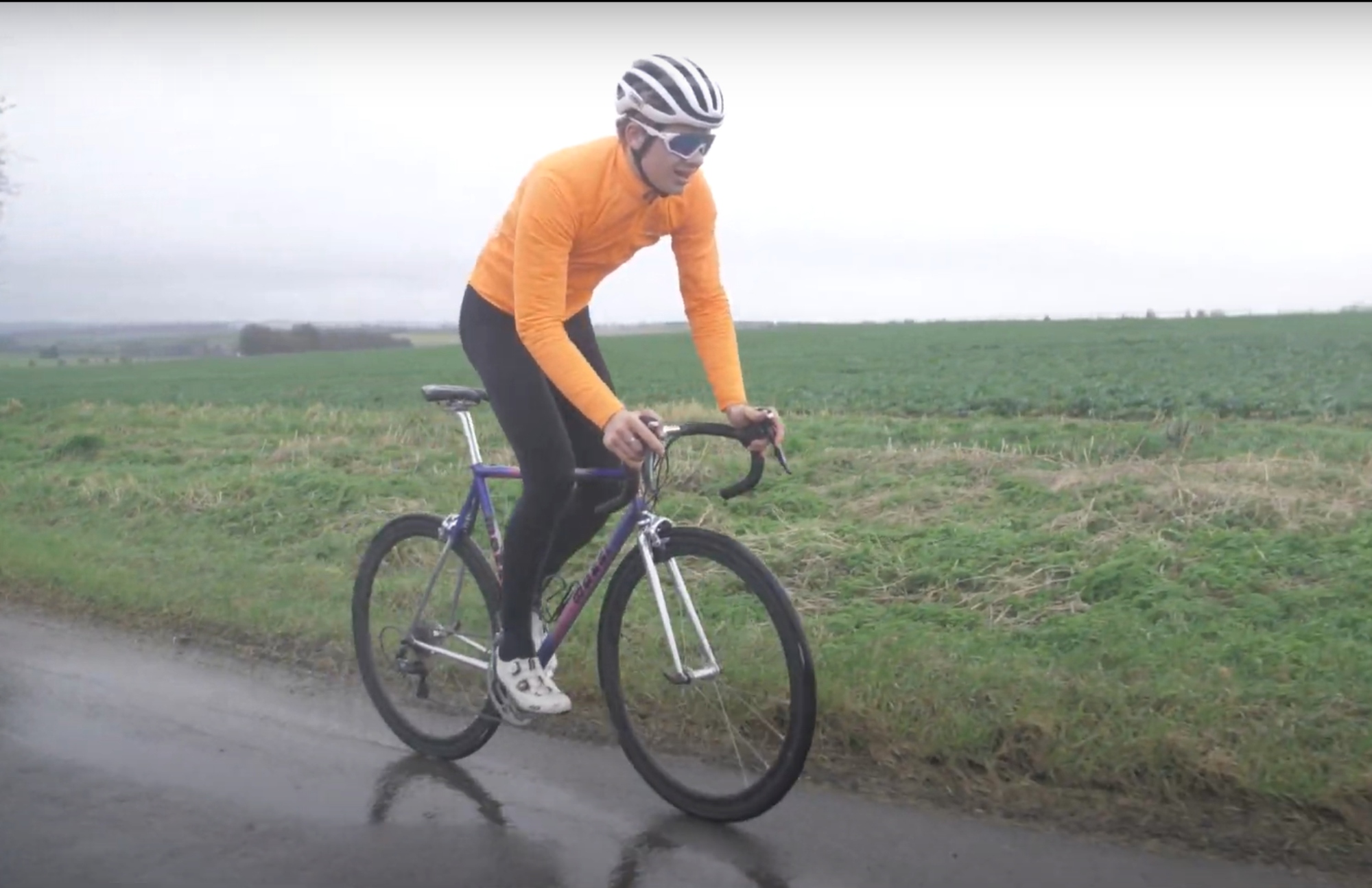
Then there is the aesthetic. Pretty much every ride I do now will feature a cafe at some point, and the truth is I love how this looks up against the fence while I sip my coffee - it’s a little bit different, sitting as a modest protest against internal cable routing and £15,000 bikes - and I like that.
The biggest downgrade, however, for me, is the rim brakes. Riding in wet weather in the UK winter has reminded me just how long it takes carbon wheels to stop in the wet. That said though, pads are cheap, and fresh external cables are far easier to service than brake bleeds, and for me, that is a small price to pay.
The bottom line is that this bike does everything a bike should. It fits me great, and it makes me want to get out the door and ride more. Not bad for 500 quid.

Joe is Cycling Weekly's former tech writer. He's always had a love for bikes, since first riding a two wheeled steed before the age of four. Years down the line, Joe began racing at 16, and enjoyed great experiences internationally, racing in Italy, Spain and Belgium to name a few locations. Always interested in tech, Joe even piloted his Frankenstein hill climb bike to a Junior National Title in 2018. After taking a step back from elite level racing in April 2022, Joe joined our team as a freelancer, before becoming Tech Writer in May 2023.